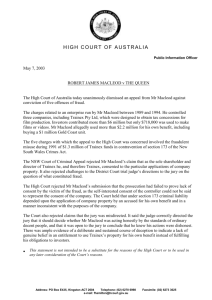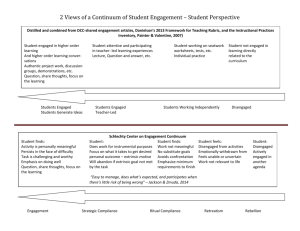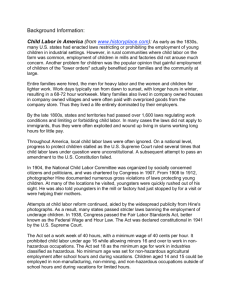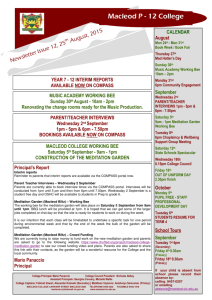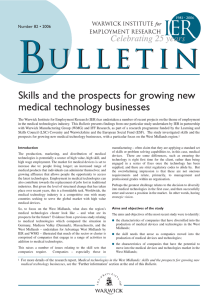Employee Engagement
advertisement
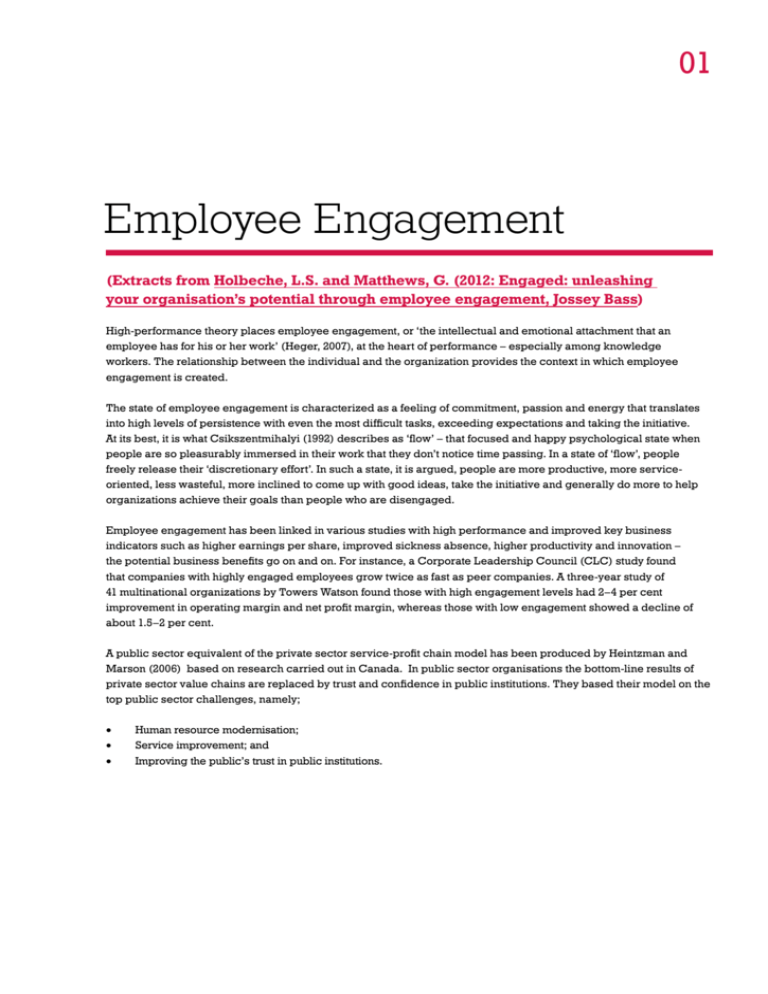
01 Employee Engagement (Extracts from Holbeche, L.S. and Matthews, G. (2012: Engaged: unleashing your organisation’s potential through employee engagement, Jossey Bass) High-performance theory places employee engagement, or ‘the intellectual and emotional attachment that an employee has for his or her work’ (Heger, 2007), at the heart of performance – especially among knowledge workers. The relationship between the individual and the organization provides the context in which employee engagement is created. The state of employee engagement is characterized as a feeling of commitment, passion and energy that translates into high levels of persistence with even the most difficult tasks, exceeding expectations and taking the initiative. At its best, it is what Csikszentmihalyi (1992) describes as ‘flow’ – that focused and happy psychological state when people are so pleasurably immersed in their work that they don’t notice time passing. In a state of ‘flow’, people freely release their ‘discretionary effort’. In such a state, it is argued, people are more productive, more serviceoriented, less wasteful, more inclined to come up with good ideas, take the initiative and generally do more to help organizations achieve their goals than people who are disengaged. Employee engagement has been linked in various studies with high performance and improved key business indicators such as higher earnings per share, improved sickness absence, higher productivity and innovation – the potential business benefits go on and on. For instance, a Corporate Leadership Council (CLC) study found that companies with highly engaged employees grow twice as fast as peer companies. A three-year study of 41 multinational organizations by Towers Watson found those with high engagement levels had 2–4 per cent improvement in operating margin and net profit margin, whereas those with low engagement showed a decline of about 1.5–2 per cent. A public sector equivalent of the private sector service-profit chain model has been produced by Heintzman and Marson (2006) based on research carried out in Canada. In public sector organisations the bottom-line results of private sector value chains are replaced by trust and confidence in public institutions. They based their model on the top public sector challenges, namely; • • • Human resource modernisation; Service improvement; and Improving the public’s trust in public institutions. 02 So interested was the UK Government in how employee engagement affects productivity that in 2007 the Department for Business (BIS) commissioned a review to investigate the links. Business leaders from all sectors of the UK economy, HR professionals, academics, union leaders, trade bodies and other interested parties took part. As David MacLeod, one of the authors of the resulting report Engaging for Success: Enhancing Performance through Employee Engagement (MacLeod and Clarke, 2009) put it, ‘the job is to shine a light on those doing it well so that more employers understand the benefits of working in that way and really embrace it’. MacLeod concluded that: “Engagement matters because people matter – they are your only competitive edge. It is people, not machines that will make the difference and drive the business”. Yet most of the major employee engagement surveys carried out by consultancies/providers, as well as Workplace Employment Relations Surveys have fairly consistently suggested that employee engagement levels in the UK, even at the best of times, are low relative to other countries, and are generally very low currently. HR consultancy Aon Hewitt reported in June 2010 that 46 per cent of the companies they surveyed had seen a drop in engagement levels – a 15-year record. Similarly, research in 2010 from the professional body for HR professionals in the UK and Ireland, the Chartered Institute of Personnel and Development (CIPD), found that only three in ten employees were engaged with their work (Alfes et al., 2010). It also discovered that: • • • • Only half of people say their work is personally meaningful to them and that they are satisfied with their job Fewer than one in ten employees look forward to coming to work all of the time, and just over a quarter rarely or never look forward to coming to work Just under half of all employees say they see their work as ‘just a job’ or are interested but not looking to be more involved Approximately half of all employees feel they achieve the correct work/life balance. Today’s tough times are likely to create even greater engagement challenges, with potentially serious consequences for organizations and the economy. Employee engagement is symptomatic of the state of the psychological contract and employment relationship, reflecting social exchange theory. Thus it concerns the reciprocal nature of the employment relationship – what employers want from employees and vice versa. If those expectations are not met, or cease to be met, for instance if the employer changes the terms on which the employee is employed, it is unlikely that the individual will remain ‘engaged’ for long. i Heintzman, R. and Marson, B. (2006): People, service and trust: links in the public sector service value chain, Canadian Government Executive ii Gilby, M. and Wood, N. (2004): The Workplace Employment Relations Survey (WERS), London: Department of Business, Innovation and Skills

